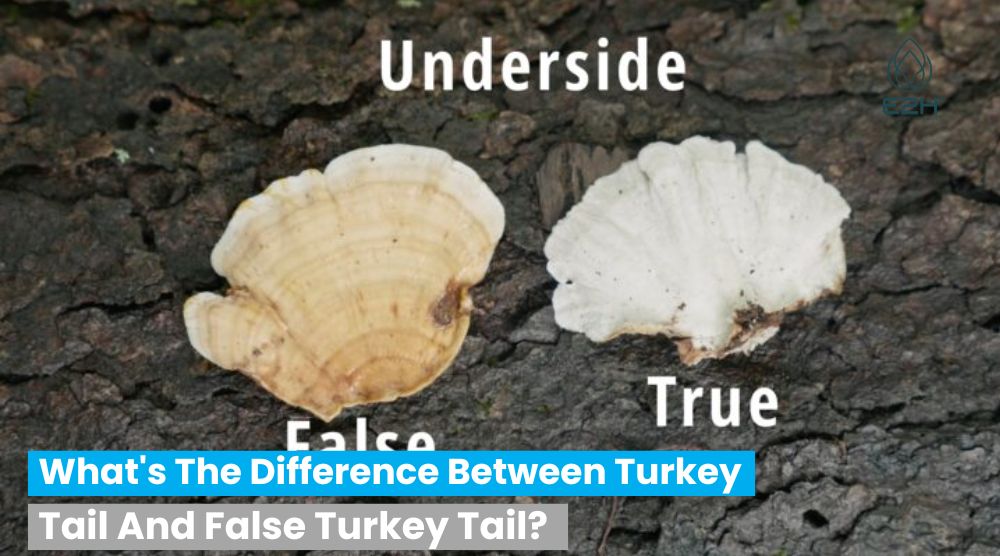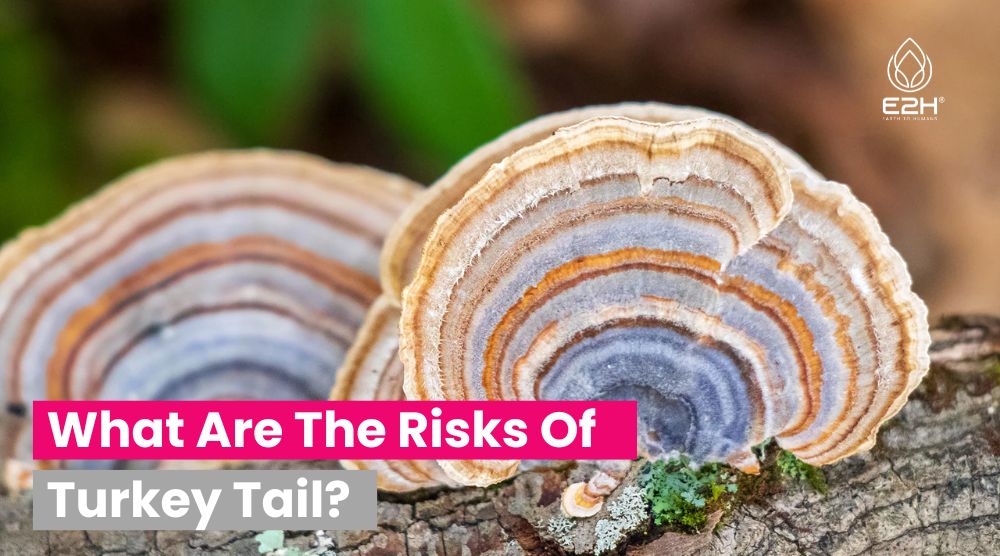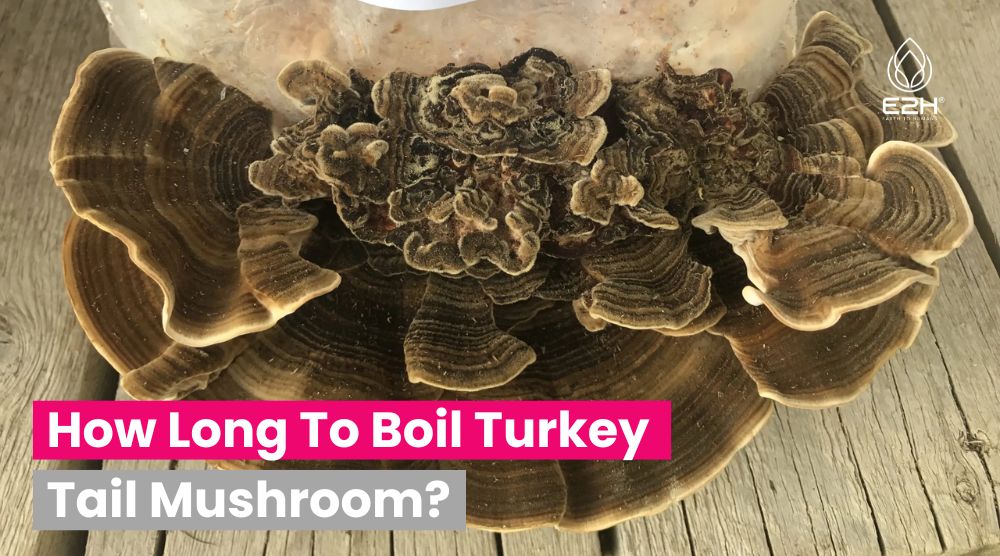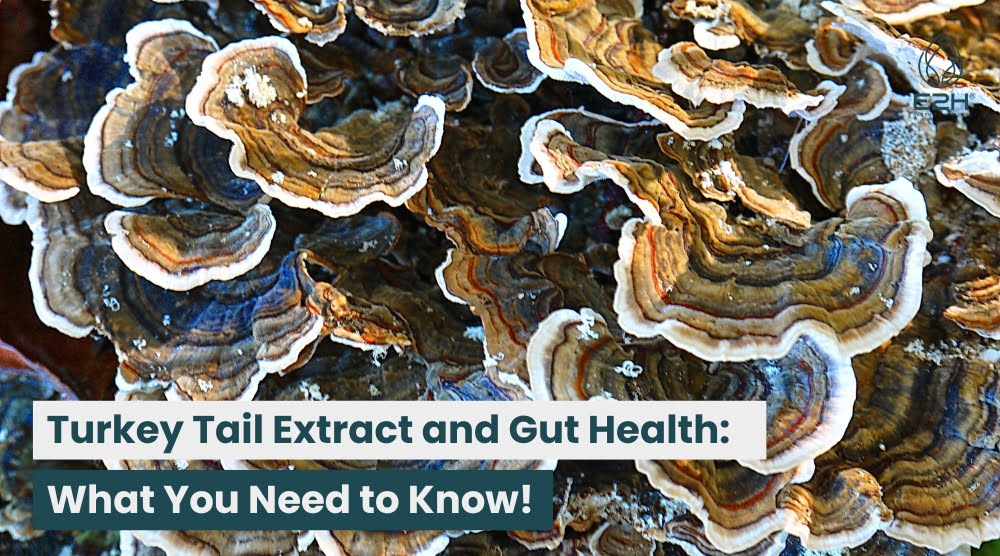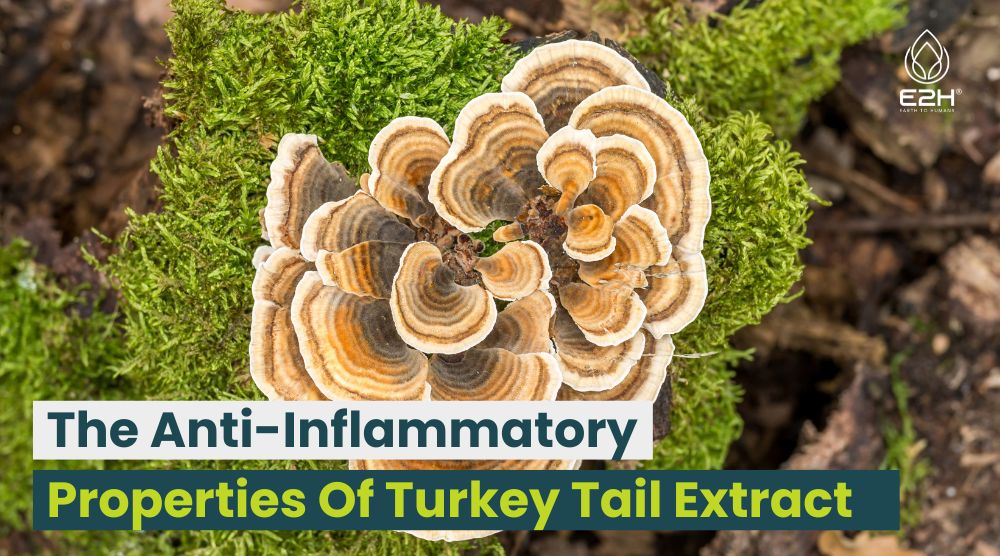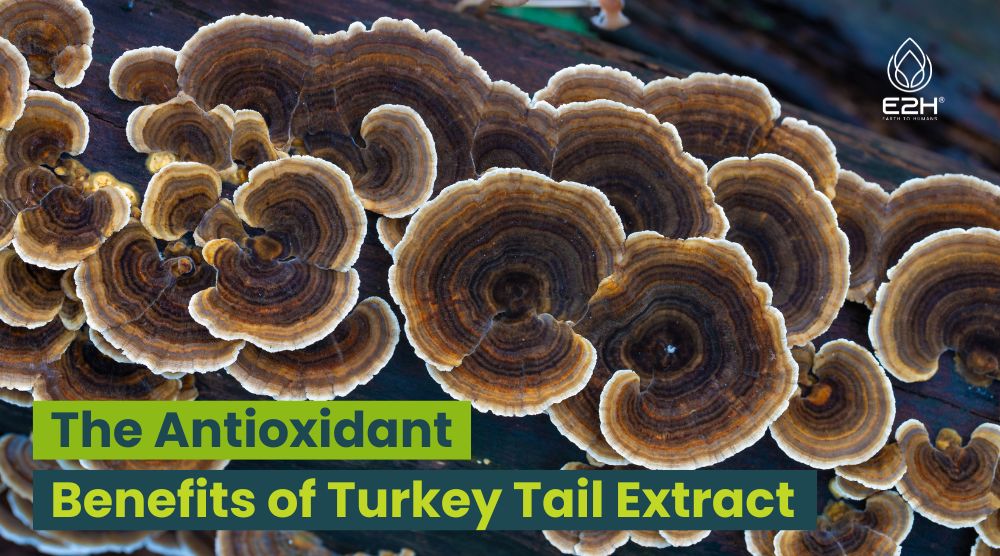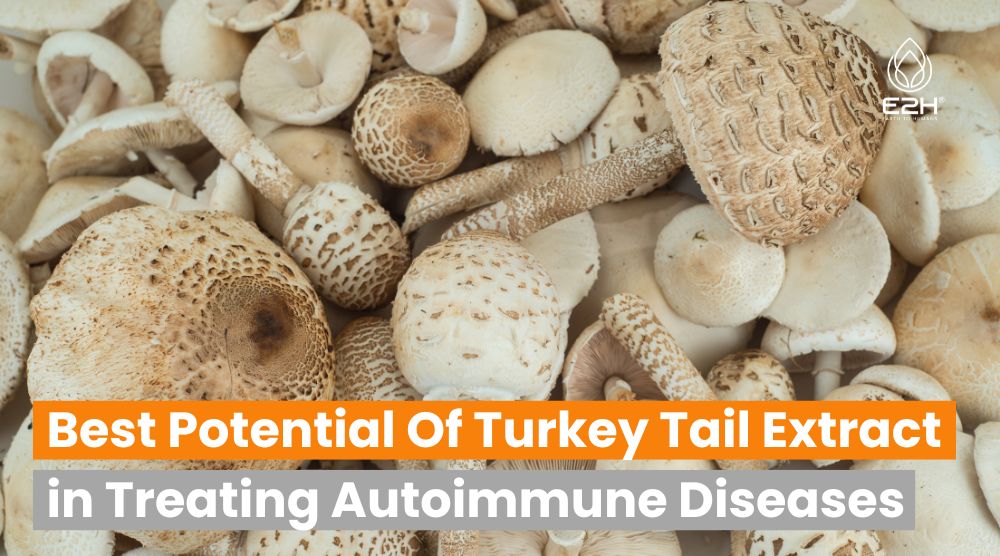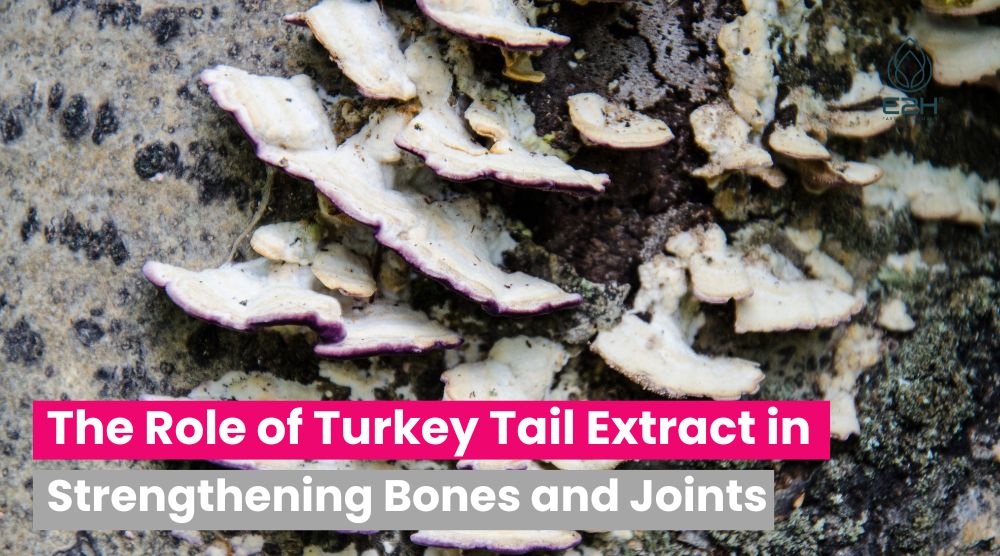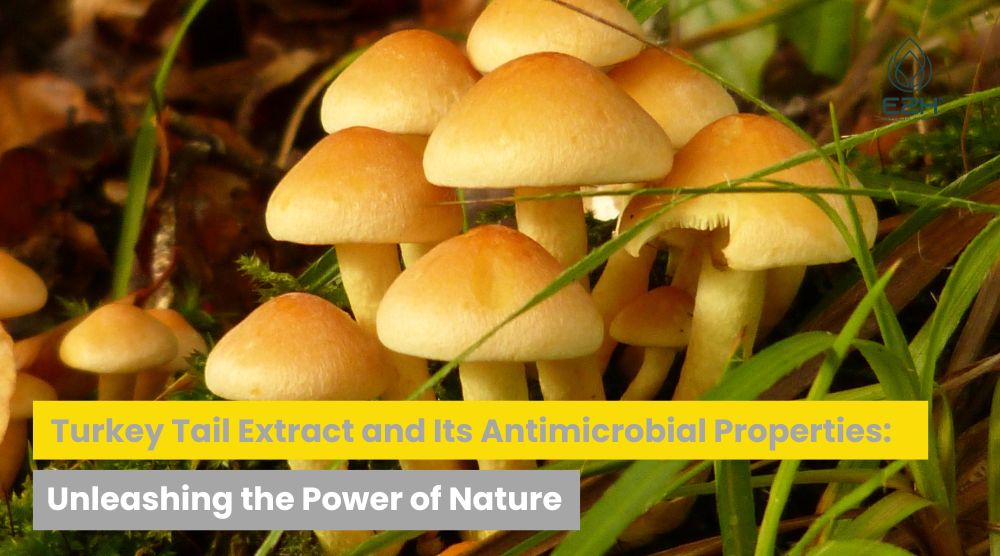Difference Between Turkey Tail And False Turkey TailTurkey tail (Trametes versicolor) has distinct colored bands, tiny pores on the underside, and well-documented medicinal properties. False turkey tail (Stereum ostrea) lacks colored bands, has a smooth underside, and limited research on its medicinal properties.
Turkey Tail (Trametes versicolor)
Description and Appearance
Turkey tail mushrooms mushroom are characterized by their layered, fan-shaped caps that resemble the colorful feathers of a turkey’s tail. The mushroom caps exhibit vibrant bands of concentric colors, ranging from shades of brown, gray, black dark blue, to white. They have a soft white velvety texture and are relatively small, typically growing between 2 and 8 centimeters in diameter.
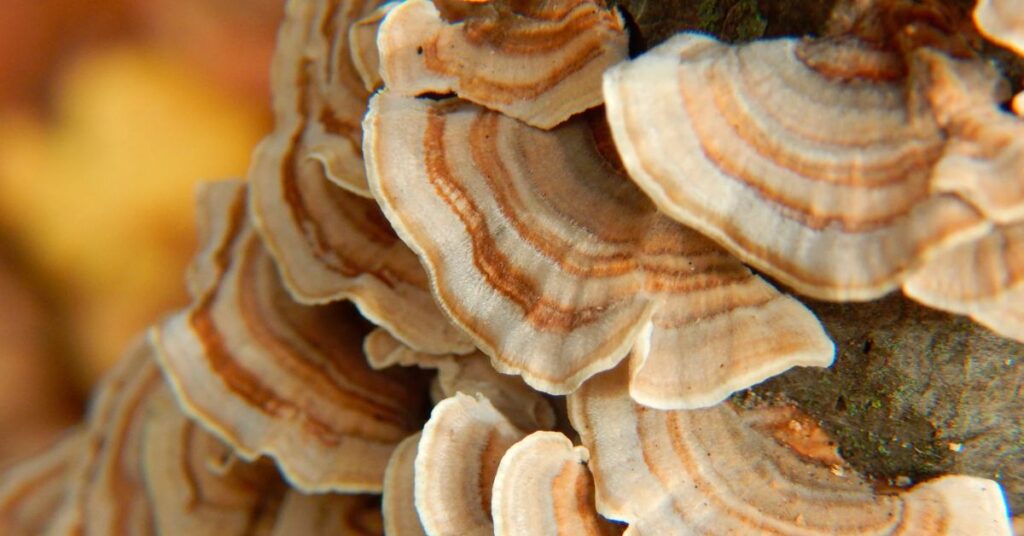
Medicinal Properties
Turkey tail mushrooms have gained significant attention for their potent medicinal properties. They are known to possess immune-boosting effects, thanks to their high concentration of polysaccharides, particularly beta-glucans. These compounds stimulate the immune system, promoting overall health and well-being.
Turkey tail mushrooms contain compounds with anti-cancer properties, such as polysaccharopeptides (PSP) and polysaccharide-K (PSK), which have shown potential in inhibiting tumor growth and improving the effectiveness of certain cancer treatments. Apart from these notable many health benefits above, turkey tail mushrooms are also believed to support gut health, reduce inflammation, and provide antioxidant support.
Culinary Uses
In addition to their medicinal properties, turkey tail mushrooms have been utilized in culinary practices for centuries, particularly in Asian cuisines. Traditionally, they are used in soups, teas, and broths to enhance flavors and impart a distinct earthy taste. In modern culinary applications, dried turkey tails and tail mushrooms are often used in stir-fries, pasta dishes, and even as a meat substitute in vegetarian and vegan recipes. Their unique texture and umami flavor make them a popular choice among chefs and food enthusiasts alike.
False Turkey Tail (Stereum ostrea)
Description and Appearance
False turkey tail mushroom, also known as “faux turkey tail,” is a mushroom that bears resemblance to true turkey tail mushroom but belongs to a different genus. It typically grows in shelf-like formations, similar to true turkey tail, but lacks the vibrant color variations. False turkey tail mushrooms exhibit a range of hues, including shades of orange, reddish-brown, and yellow. They have a smooth and often shiny surface, with a texture that is usually more rigid compared to true turkey tail.
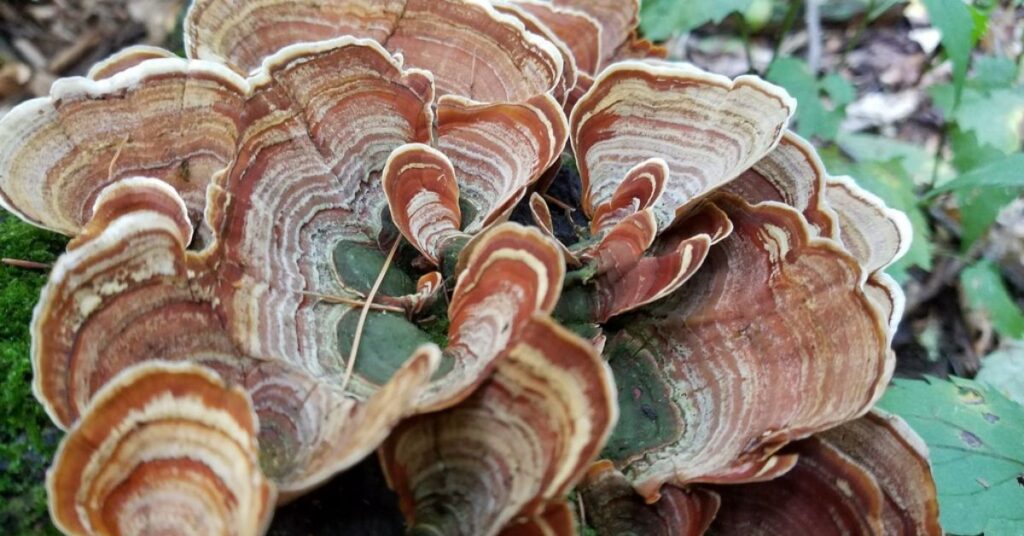
Medicinal Properties
False identify turkey tail mushrooms also have been less extensively studied than their turkey tail counterparts. While they may share some chemical compounds with turkey tail, such as polysaccharides, there is limited research on their medicinal properties. However, like many mushrooms, false turkey tail is believed to possess anti-inflammatory and antioxidant qualities, which may contribute to overall health and well-being. It’s important to note that the medicinal properties of false identify turkey tail mushrooms have not been as well-documented or scientifically validated as those of other species of turkey tail.
Ecological Role and Habitat
False turkey tail extracts both turkey tails and tail mushrooms play a role in ecological systems, contributing to the decomposition of woody material in forests. They are often found growing on decaying logs, tree stumps, or fallen branches. These mushrooms prefer humid environments and are commonly encountered in woodland areas with ample shade. While they may share habitats with other turkey tails and tail mushrooms, false turkey tail has its own ecological niche and distribution.
Differentiating Turkey Tail and False Turkey Tail
To differentiate between functional mushrooms and correctly identify the turkey tail mushrooms and false turkey tail mushrooms, several key features of major mushrooms can be observed.
Key Features for Identification
- Pore Surface and Spacing: Turkey tail mushrooms have a distinctive pore surface, with tiny, closely spaced pores that appear as small holes. False turkey tail, on the other hand, lacks a pore surface and instead has a smooth underside.
- Underside Coloration: Turkey tail mushrooms typically have a white to light-colored pore surface, which contrasts with the darker upper cap surface. In contrast, false turkey tail mushrooms may have a similar coloration on both surfaces or exhibit variations of orange, reddish-brown, and yellow.
- Additional Distinguishing Characteristics: Turkey tail mushrooms often show concentric bands of colors on their upper surface, whereas false turkey tail may have a more uniform or mottled appearance. Additionally, turkey tail mushrooms tend to be thinner and more flexible, while false turkey tail is usually thicker and more rigid.
Visual Comparisons
For a better understanding of the differences between true turkey tail tea, safe turkey tail mushroom identification other, medicinal mushroom, turkey tail mushroom and false turkey tail mushrooms, side-by-side comparisons can be helpful. Include side-by-side images of true turkey tail, and false turkey tail, highlighting their distinguishing features.
Benefits and Uses Comparison
When it comes to the health benefits of and uses of real turkey tail mushroom and false turkey tail mushrooms, there are notable distinctions.
Medicinal Properties
Turkey tail mushrooms have been extensively researched for their medicinal properties, particularly their immune-boosting and anti-cancer effects. The presence of beta-glucans, PSP, and PSK compounds in turkey tail mushrooms has shown promising results in various studies. In contrast to real mushrooms, false turkey tail mushrooms have limited research supporting their medicinal properties, and further studies are needed to explore their potential benefits.
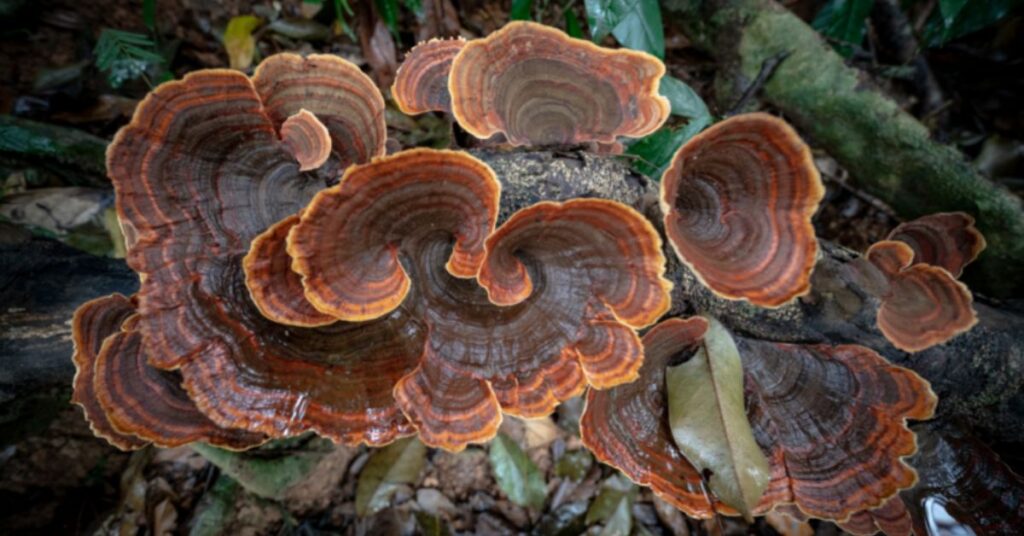
Culinary Applications
Turkey tail mushrooms have a distinct flavor profile and are commonly used in various culinary applications, both traditional and modern. Their earthy, umami taste and tender texture make them suitable for soups, stir-fries, and other dishes. False turkey tail mushrooms, while edible, are less commonly used in cooking due to their tougher texture and less pronounced flavor compared to actual turkey tail them.
Is false turkey tail good for anything?
False turkey tail (Stereum ostrea) mushrooms have limited research on their medicinal properties. While they may possess certain beneficial compounds, their specific health benefits are not as well-documented as those of turkey tail. Further studies are needed to explore the potential uses and benefits of false turkey tail mushrooms in more depth.
Are false turkey tail mushroom edible?
False turkey tail mushrooms are generally considered to be edible, but they are not as commonly used in culinary practices compared to turkey tail. The texture of false turkey tail is often tougher, and the flavor is less pronounced compared to turkey tail. As with any wild mushroom, it is important to exercise caution, properly identify the mushroom, and ensure it is sourced from clean and safe environments before consumption.
Are there any poisonous turkey tail look alikes?
When foraging for turkey tail mushrooms, it is essential to be aware of potential poisonous look-alikes. One such example is the “Jack O’Lantern” mushroom (Omphalotus olearius), which can resemble turkey tail in appearance. However, the Jack O’Lantern mushroom is toxic and not suitable for consumption. It is crucial to thoroughly understand the distinguishing features and characteristics of turkey tail and consult with experts or field guides to avoid any poisonous look-alikes.
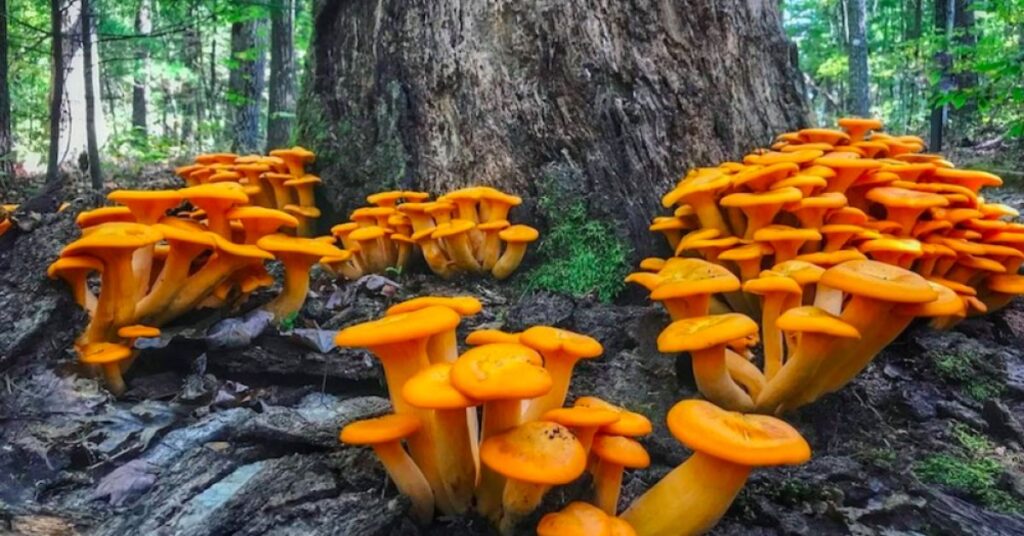
What does turkey tail do for the body?
Turkey tail (Trametes versicolor) mushrooms offer several benefits for the body. They are renowned for their immune-boosting properties, primarily due to the presence of beta-glucans. These compounds help stimulate the immune system, enhancing its ability to fight off infections and diseases.
Turkey tail mushrooms also contain polysaccharopeptides (PSP) and polysaccharide-K (PSK), which have shown potential in inhibiting tumor growth and improving the effectiveness of certain cancer treatments. Additionally, turkey tail mushrooms are believed to have anti-inflammatory, antioxidant, and gut health-supporting properties, contributing to overall well-being. Their medicinal potential makes them a popular choice in traditional medicine and natural health practices.
Where can turkey tail mushrooms be found?
Turkey tail mushrooms (Trametes versicolor) can be found in various locations around the world. They are widely distributed and commonly encountered in forests, woodlands, and other wooded areas. These mushrooms have a saprophytic nature, meaning they thrive on decaying organic matter. They often grow on fallen logs, tree stumps, and dead branches, particularly on hardwood trees such as oak, maple, and birch.
Turkey tail mushrooms prefer moist and humid environments, and they are known to thrive in temperate regions. Whether in North America, Europe, Asia, or other suitable habitats, the diligent mushroom hunter can find turkey tail mushrooms in their natural growing environments.
Winter Foraging. True Turkey Tail vs False Turkey Tail. How to identify turkey tail mushroom
FAQs
Can real turkey tail and false turkey tail be consumed interchangeably?
No, while both mushrooms and turkey tails are generally considered edible, turkey tail is more commonly used in cooking due to its desirable flavor and texture.
Are there any toxic look-alikes for turkey tail or false turkey tail?
It’s always important to exercise caution when foraging for mushrooms. While there aren’t specific toxic look-alikes for turkey tail or false turkey tail, it’s recommended to consult an experienced forager or mycologist for proper identification.
Can false turkey tail be used as a substitute for turkey tail in traditional medicine?
False turkey tail has not been extensively studied for its medicinal properties, so it is not recommended as a substitute for turkey tail in traditional medicine.
What precautions should be taken while foraging for turkey tail or false turkey tail?
When foraging for mushrooms, ensure you have proper identification knowledge, gather from clean and unpolluted environments, and follow local regulations. It’s advisable to consult with experts or join mushroom foraging groups for guidance.
Are there any ongoing studies or research comparing the medicinal properties of these wild mushrooms?
Research on the medicinal properties of mushrooms is continually evolving. There may be ongoing studies comparing the benefits of the turkey tail mushroom and false turkey tail mushrooms, but it’s best to refer to scientific literature or research databases for the most up-to-date information.
Conclusion
The turkey tail mushroom and false turkey tail mushrooms may share a similar appearance, but they differ in terms of their medicinal properties, culinary uses, and ecological roles. Turkey tail mushrooms, with their vibrant colors and well-documented health benefits, have gained popularity as a natural immune booster and anti-cancer agent. On the other hand, false turkey tail mushrooms have limited research supporting their medicinal properties but play a role in forest ecosystems. Differentiating these wild mushrooms, based on key features is crucial to avoid confusion and utilize their unique characteristics appropriately.
